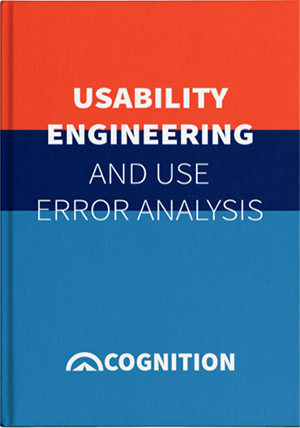Cognition Blog
Our blog navigates product development and compliance for the life science industry. Our solutions save time and money, delivering products with less risk.

By:
Cognition Corporation
February 14th, 2019
Life science product development can sometimes be a niche enterprise, and for good reason—certain populations and conditions require specific solutions and treatments. Providing these can be a boon to both patient outcomes and your organization’s bottom line, as well as progressing that particular field of treatment.

By:
Cognition Corporation
February 12th, 2019
We have entered the age of big data—the volume of data gathered in healthcare alone is becoming larger and more complex as the days go by. This wealth of information has sparked the rise of open access databases for public and commercial use around the globe. All this freely available data can be a boon to innovation in life sciences. However, the risks these databases present, and the approaches regulatory agencies take toward those risks, are important considerations for your organization.

Subscribe to the blog and get this guide for free

By:
Cognition Corporation
February 7th, 2019
Labeling is an important part of FDA’s quality system regulation for medical devices. So important, in fact, that labeling regulations are captured in several distinct parts of 21 CFR Subchapter H – Medical Devices. These sections cover how devices are tracked, the unique device identifiers (UDIs) and universal product codes (UPCs) necessary for that tracking, and specific labeling requirements.

By:
Cognition Corporation
February 5th, 2019
First codified in the Food and Drug Administration Modernization Act of 1997, least burdensome provisions have guided all of FDA’s regulatory work ever since. The provisions impact everything from the development of new guidance documents to adjusting and improving upon existing approval pathways, and so on. Particularly with the agency’s bolstered commitment to addressing digital health products in the coming years, the least burdensome approach has never been so important. But how does FDA actually define “least burdensome” exactly, and how do they enact it?

By:
Cognition Corporation
January 31st, 2019
Time to market is only part of the equation when it comes to being competitive in life science industries. The other major factor is differentiation: what does your product do that is inventive and improves outcomes for users and patients beyond the capacities of similar, legally marketed products? To build that value into your product, innovation is key.

By:
Cognition Corporation
January 24th, 2019
A core component of managing your medical device design is identifying and maintaining its essential outputs. However, there’s a lot of gray area when it comes to essential outputs, and the regulatory definitions aren’t always clear. In order to adequately address them in your development activities, figuring out what these outputs are is key.

By:
Cognition Corporation
January 22nd, 2019
Design history files (DHFs) are crucial for both your compliance efforts and overall product quality. However, many life science organizations still grapple with managing them well. Why?

By:
Cognition Corporation
January 17th, 2019
Whether your life science organization is growing or already well-established, you understand the importance of risk management in product development. For both compliance and product fidelity, you need to be sure as much risk as possible is designed out of your product.

By:
Cognition Corporation
January 15th, 2019
So, your life science organization has made a resolution to improve your product development activities in the new year. Now what? Many factors need to be taken into account, and stakeholders from all facets of development need to be involved. Determining how to meet your organization’s directives while finding solutions that optimize your current capacities and resources can therefore be difficult. If you find yourself stuck trying to improve your organization’s product development in the coming year, there are a handful of approaches that can help.

info@cognition.us
1 (781) 271-9300
24 Hartwell Avenue,
Lexington, Massachusetts 02421
©2025 Cognition Corporation | Privacy Policy